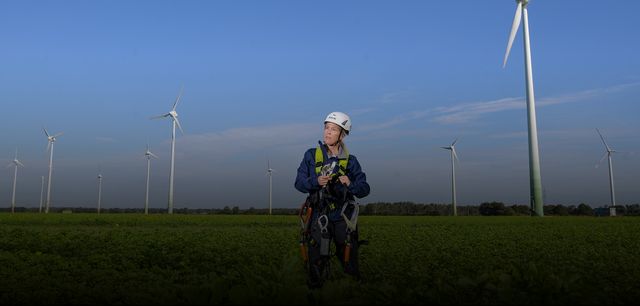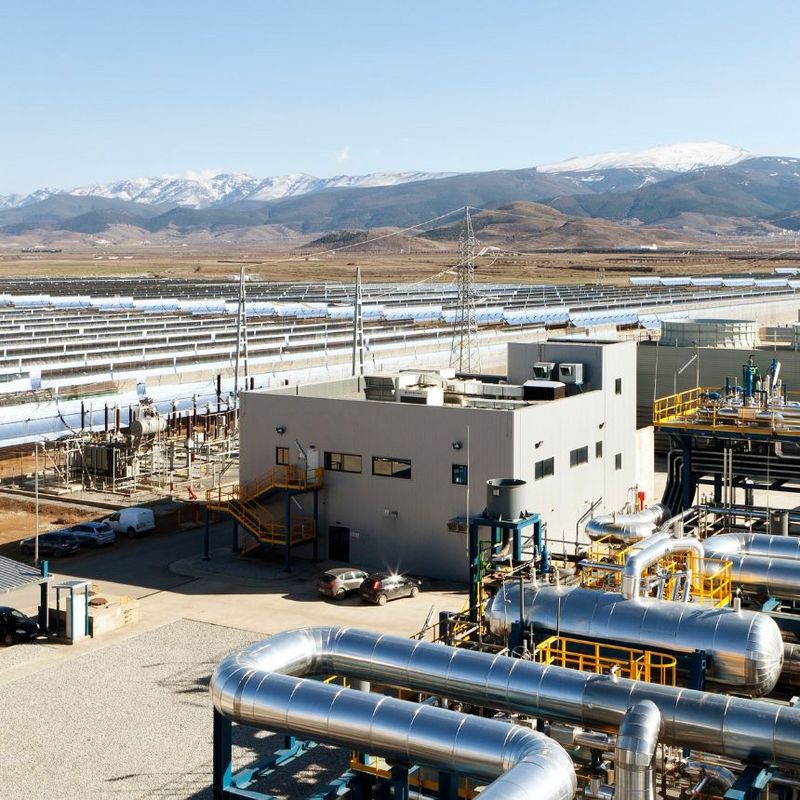15 december 2022
In Germany, wind power is considered the number one source of regenerative energy. In the first six months of 2022, one quarter of Germany’s electricity was generated using wind power. The green energy provided by wind lights our homes, runs washing machines and electric cars – and, when transformed into hydrogen – powers fuel-cell vehicles. But what impact do these power-generating windmills have themselves on the wind? Do they slow it down, for instance?
Wind is air, and air consists of molecules. When these hit a turbine’s rotor blades, they force them to move – whereupon the molecules themselves are abruptly slowed down and get caught up in turbulent patterns behind the blades. In the lee of the turbines, more turbulent and slower air flows arise. This wake effect has long been known to science, can be measured very precisely using LIDAR technology and is taken into account in the planning of wind farms. The individual wind turbines are positioned accordingly with minimum distances between them and in a particular arrangement with regard to the prevailing wind direction. This is to ensure that the turbines do not take the wind out of each other’s sails, so to speak.
In rural areas, this wake effect tends only to be short-lived outside the actual wind farm itself. When the air flows over forests, mountains, bushes, houses or other uneven surfaces, it becomes turbulent. The turbulence caused by the wind turbine is thus less significant. And, in the case of a modern turbine with a rotor span of 200 metres, its effect dies away no more than one kilometre after passing through the blades.
Marine braking effect
The situation at sea is different because the wind hardly breaks at all as it passes over the frequently flat surface of the water. Researchers at Technische Universität Braunschweig and the Karlsruhe Institute of Technology (KIT) have studied the wind speed reduction effect in large wind farms along the North Sea coast. The result? The wind blows more slowly for up to 70 kilometres behind the offshore wind farms. These long-lasting effects arise under particular atmospheric conditions, when warm air from the mainland flows unmixed over the cold water of the North Sea. With well mixed layers of air, the effect is significantly reduced.
According to the researchers, these findings should be taken into account in the planning of future offshore wind farms. A study carried out by the Max Planck Institute for Biogeochemistry that was commissioned by Agora Energiewende comes to similar conclusions. The thinktank’s recommendation is that Germany should coordinate its offshore planning with its neighbours on the North Sea. This would make it possible to make optimum use of the coastal wind energy.
Wind energy in the eye of the hurricane
There is unanimous agreement in the research community that the wind speed reducing effect of marine wind farms has no impact on the weather or the global climate. However, as US scientists have calculated, wind farms could help tame the destructive power of hurricanes and typhoons: according to the scientists, a wind farm with 78,000 turbines would have reduced the wind speed of the devastating hurricane Katrina by a good 140 kilometres per hour and its wave height by up to 79 percent. Theoretically, at least. But such massive wind farms are currently still a pipe dream. And the turbines would have to be much more robust: they currently get switched off for safety reasons when the wind speed exceeds 125 kilometres per hour.



